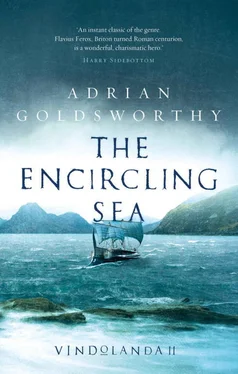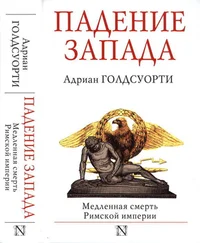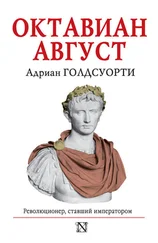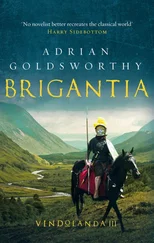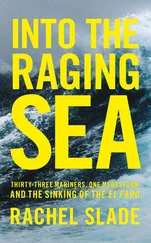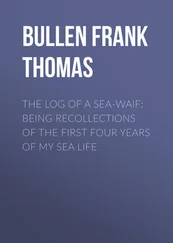Адриан Голдсуорти - The Encircling Sea
Здесь есть возможность читать онлайн «Адриан Голдсуорти - The Encircling Sea» весь текст электронной книги совершенно бесплатно (целиком полную версию без сокращений). В некоторых случаях можно слушать аудио, скачать через торрент в формате fb2 и присутствует краткое содержание. Город: London, Год выпуска: 2018, ISBN: 2018, Издательство: Head of Zeus, Жанр: Историческая проза, Прочие приключения, на английском языке. Описание произведения, (предисловие) а так же отзывы посетителей доступны на портале библиотеки ЛибКат.
- Название:The Encircling Sea
- Автор:
- Издательство:Head of Zeus
- Жанр:
- Год:2018
- Город:London
- ISBN:978-1-784-97816-7
- Рейтинг книги:5 / 5. Голосов: 1
-
Избранное:Добавить в избранное
- Отзывы:
-
Ваша оценка:
- 100
- 1
- 2
- 3
- 4
- 5
The Encircling Sea: краткое содержание, описание и аннотация
Предлагаем к чтению аннотацию, описание, краткое содержание или предисловие (зависит от того, что написал сам автор книги «The Encircling Sea»). Если вы не нашли необходимую информацию о книге — напишите в комментариях, мы постараемся отыскать её.
A FORT ON THE EDGE OF THE ROMAN WORLD cite cite
The Encircling Sea — читать онлайн бесплатно полную книгу (весь текст) целиком
Ниже представлен текст книги, разбитый по страницам. Система сохранения места последней прочитанной страницы, позволяет с удобством читать онлайн бесплатно книгу «The Encircling Sea», без необходимости каждый раз заново искать на чём Вы остановились. Поставьте закладку, и сможете в любой момент перейти на страницу, на которой закончили чтение.
Интервал:
Закладка:
Centurion was not a rank, but a grade of officer, with a considerable range in status and responsibilities. There were some sixty centurions in a legion, and between six and ten in an auxiliary cohort. Many served away from their units on long- or short-term detachment. A cohort at Vindolanda in the nineties AD had only one out of its six centurions at the base. Two more were with the biggest detachment of the cohort at Corbridge, but the others were widely dotted around the province. The post of centurio regionarius or regional centurion was one of the ones that took these officers away. It is attested in Britain and elsewhere, particularly in Egypt, and was probably common. These men acted as the representative of Roman authority in an area, their role a mix of civil and political as well as military. In Egypt there is good evidence for them acting as policemen and investigating crimes.
Before Hadrian’s Wall
The story occurs at the start of the reign of Trajan, whose successor Hadrian came to Britain and ordered construction of Hadrian’s Wall around the year AD 122. Our sources have little to say about major events in Britain under Trajan, although there is talk of major conflict, which may well have prompted the decision to build the Wall. The fort at Vindolanda (modern Chesterholm) lies a few miles south and within sight of the Wall and clearly was incorporated within the network of garrisons serving it.
Although Julius Caesar had landed in Britain in 55 and 54 BC, no permanent Roman presence was maintained, and it was not until AD 43 that the Emperor Claudius sent an invasion force across the Channel. In AD 60 Boudicca’s rebellion devastated southern Britain, but after her defeat there is no trace of any serious resistance in the Lowlands. This is not true of northern Britain, which was garrisoned by substantial numbers of troops for the remaining three and a half centuries of Roman occupation.
In AD 100 few would have guessed that the Romans would stay for so long. Their presence in the north was more recent, for it was mainly in the seventies and eighties AD that this area was overrun. During this time Roman armies marched far into the north of what would become Scotland, while a naval squadron for the first time circumnavigated Britain, confirming that it was an island. An entire legion – one of the four then garrisoning the province and one of twenty-eight in existence – built a base at Inchtuthil in Perthshire, the biggest site in a network of garrisons on the edge of the Highlands. Around the same time, a system of observation towers along a military road was constructed along the Gask ridge.
All of this activity, which to a great extent is known only from the archaeological remains, makes clear the Romans’ intention to occupy this region more or less permanently, but in the late eighties AD priorities changed. The Emperor Domitian, faced with serious trouble on the Danube, withdrew Legio II Adiutrix from Britain and did not replace it. It is probable that substantial numbers of auxiliaries were withdrawn at the same time, so that the provincial garrison was cut by at least a quarter. Inchtuthil and many of the other bases were abandoned, and the same thing happened a little later to the remaining sites and the Gask ridgeline. No Roman base was maintained north of the Forth-Clyde line, and soon the northernmost outpost was at Trimontium or Newstead.
Several forts were maintained or built close to what would one day become the line of Hadrian’s Wall. A couple of years after our story, a proper road running between Carlisle and Corbridge was constructed and more forts and smaller outposts added. Today the road is known by its medieval name, the Stanegate or ‘stone road’, and archaeologists continue to debate its composition and purpose. By about AD 106 Newstead was abandoned in another withdrawal. Our paltry literary sources make no mention of any of this, so it left to us to guess from the archaeology just what was going on.
A novelist has more freedom, and once again I have done my best to reconstruct these years for our purposes in a way that never conflicts with any hard evidence. At the very least I hope that these stories tell of things that could have happened. Something made the Romans station significant numbers of troops in this area at the end of the first century AD, and then made them increase these numbers and develop the deployment along the Stanegate just a few years later. All of the forts mentioned in the story existed and were occupied in AD 98. Syracuse is an invention, but typical of the many small outposts set up by the Roman army as needed. I see it as a predecessor to the excavated sites at Haltwhistle Burn and Throp, which were built alongside the Stanegate, although these were stone structures and larger than the fictional Syracuse. In the late first century AD most of the structures built by the army in Britain were in turf and timber. Some sites were being rebuilt in stone, and in the second century this became ever more common.
One of very many mysteries surrounding Hadrian’s Wall are the defences along the Cumbrian coast. These were part of the initial design of the Wall and consisted of towers and fortlets matching closely to those on the line of the Wall itself and at similar intervals. Many perch on the cliffs just above beaches and all are very close to the sea. All that is missing is a linear barrier like the Wall itself. We have no evidence explaining why this line of outposts and forts was felt necessary. Later in the second century AD many parts of the system were abandoned, but forts – and just possibly some towers and fortlets – remained in use throughout the life of the Roman province. The most obvious explanation of all this effort is that there was a threat from the sea. Later, this either diminished or was dealt with by other means, allowing the coast to be secured by fewer troops.
Alauna (modern Maryport) now boasts an excellent museum ( www.senhousemuseum.co.uk) with a particularly fine collection of inscriptions. The fort visible today and most of the collection date to after our story. There are hints of Trajanic activity on the site, but little is really known. The alignment of the later fort with the road suggests that an earlier base was built in a slightly different position. At Aballava (Burgh by Sands) there was a Roman watchtower on high ground overlooking the lowest fords on the River Solway. At some point in Trajan’s reign, this was demolished and a fort for an entire auxiliary unit built on the site. Around the same time, another Roman base was constructed on lower ground to the west. Little is known about it, but it is claimed that timber structures were discovered, suggesting at least semi-permanent occupation and not simply a marching camp used for a few nights or weeks. In my imagination, this is the base used for the legate’s manoeuvres and then kept in occupation for some time afterwards following the raid in our story and the ongoing threat of attacks from the sea.
Hibernia, the Highlands and Islands
Much of the action in this story takes place well outside the province of Britannia, but because of the sources for the history and society of these regions I have been deliberately vague about precise locations. Hibernia/Ireland was never occupied by Rome. Merchants from the Roman Empire were regular visitors there, and there was a fair bit of diplomatic activity. An exiled Hibernian prince came to Agricola asking that the Romans restore him to power by force, but the governor decided not to intervene. There is no clear evidence for Roman troops ever being sent to Ireland. However, a diplomatic escort of the sort imagined in the book would be most unlikely to leave any trace so we need not worry too much about that. Such things did occur elsewhere beyond Rome’s frontiers, so it is not implausible in itself.
Читать дальшеИнтервал:
Закладка:
Похожие книги на «The Encircling Sea»
Представляем Вашему вниманию похожие книги на «The Encircling Sea» списком для выбора. Мы отобрали схожую по названию и смыслу литературу в надежде предоставить читателям больше вариантов отыскать новые, интересные, ещё непрочитанные произведения.
Обсуждение, отзывы о книге «The Encircling Sea» и просто собственные мнения читателей. Оставьте ваши комментарии, напишите, что Вы думаете о произведении, его смысле или главных героях. Укажите что конкретно понравилось, а что нет, и почему Вы так считаете.
